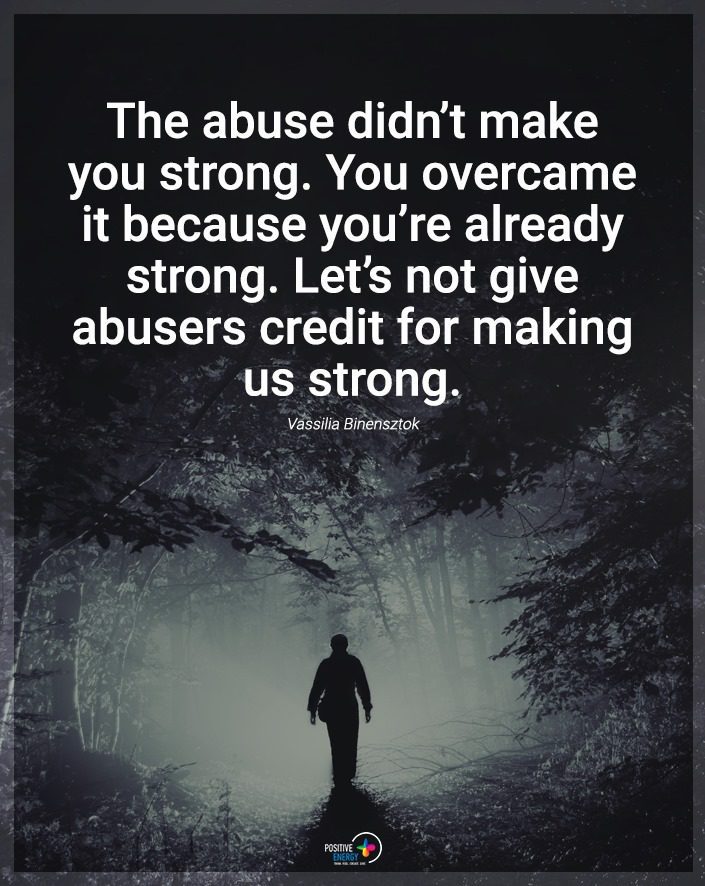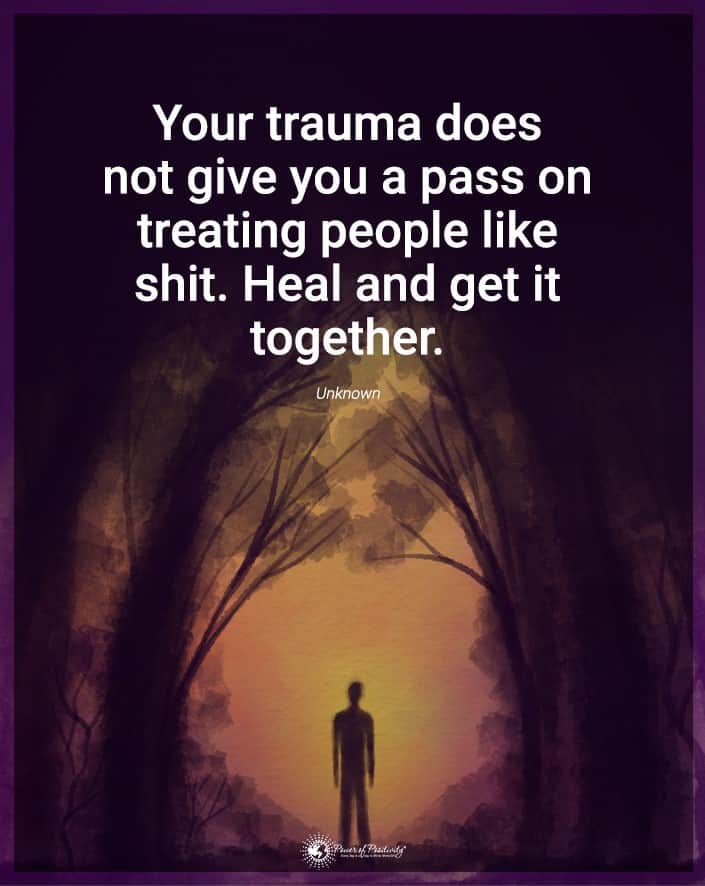Survivors of emotional abuse have been through a painful and confusing ordeal. Some continue to experience abuse regularly due to situations that are tough to navigate. The nature of abuse preys on these unfortunate circumstances, leading to a perpetual cycle of emotional abuse that begets more abuse.
To escape an unhealthy relationship, one must also escape that downward, self-repeating spiral. But that’s much easier said than done. Here are five practical ways to break the cycle of emotional abuse.
1. Recognize the Cycle of Emotional Abuse for What It Is
Emotional abuse can often be subtle. That’s why it’s so easily overlooked, swept under the rug, or further minimized. To break its cycle, you must be able to recognize when that cycle is happening.
This insight extends to recognizing emotionally abusive behavior. Even when you realize that someone is emotionally abusive, you may miss some subtle signs of their abuse.
Remember that the cycle of emotional abuse can include these outcomes:

- Isolation, such as separating you from your family and friends. This separation can be done by sowing discontent between you and those you love or by trying to monopolize your time.
- Invalidation, such as dismissing your feelings, emotions, and experiences. This behavior can include gaslighting you into believing that your concerns never happened. It can also involve implying that you’re too sensitive and accusations of selfishness or exaggeration.
- Emotional blackmail, or using your emotions against you. This manipulation can include using your guilt, fears, and flaws against you to push your buttons or manipulate you. It may also involve humiliating you in public, so you fall silent or feel too ashamed to speak out. Withholding affection or giving you the silent treatment as “punishment” is also emotional blackmail.
- Unrealistic expectations, often with hypocritical twists to them. These actions can include demanding that you meet their every need or never being satisfied with you.
- Controlling behavior, such as insisting that you need their permission for whatever you do. This behavior can include snooping through or even taking your possessions and managing finances.
- Chaos creation, or intentionally manufacturing conflict just for the sake of it. You might feel like you walk on eggshells around them.
- Superior behavior, or treating you like you’re inferior to them. This mistreatment can include insulting you, name-calling, making fun of your opinions, or utilizing condescending sarcasm.
In addition, many survivors of abuse feel in denial about what is happening to them. They may go as far as to trick themselves into believing no abuse is occurring. Recognizing the abuse for what it is means you don’t fall victim to this way of thinking. The sooner you admit that you are a victim of emotional abuse, the faster you can accurately recognize it. This affirmation also means not making excuses for your abuser.
2. Think About How the Cycle of Emotional Abuse Impacts You
Understanding the impact of emotional abuse can be an eye-opening way to break the cycle. It’s easy for survivors to be in denial of their ordeal, after all, so sometimes you may think that it wasn’t that bad. But studies show that the impacts are just as significant as the effects of physical abuse.
When you understand the impact of emotional abuse, you realize that your partner is in the wrong. You see that what you experienced wasn’t okay and can find the strength to break free, heal, and move on.
Common impacts that almost every emotional abuser survivor faces are the following:
- Loss of sense of self to please the abuser or adopt the abuser’s presentation of you.
- Feelings of worthlessness and self-loathing as you internalize the words of the abuser.
- Increased experience of self-doubt, again echoing the abuser’s words.
- A constantly critical inner voice that mimics that of the abuser.
- Inability to see your life and self realistically due to the constant gaslighting and invalidation.
- Fear that others dislike you because of what the abuser made you think of yourself.
- Desire to isolate yourself from others to protect yourself from them or think you don’t deserve them.
- Heightened anxiety, depression, and other mental disorders and their symptoms.
- Heightened risk of stomach ulcers, eating disorders, heart problems, insomnia, and stress-related disease risk.
It may also be helpful to think about the future potential impact if the cycle continues. While all situations are unique, they also have long-term effects that worsen the longer you stay in the abusive environment. There is also a significant risk of the abuse escalating to physical or sexual forms and other types of violence. This is according to the experts of the U.S. Department of Health and Human Services’ Office on Women’s Health.
3. Prioritize Yourself as You Break the Cycle of Emotional Abuse
When you’re trying to break out of a destructive cycle of abuse, you have to put yourself first. This shift can be challenging to do after you feel damaged by emotional abuse. Your abuser likely made you feel guilty for ever wanting to prioritize yourself. You may have constantly put them over you, as any other activity was deemed selfish by them.
Prioritizing yourself lets you get used to being your person again. You might feel a little guilty about it at first, but remember that you deserve your needs to be met. Your abuser robbed you of those requirements to deplete your positive thinking and further hurt you.
Making sure you put yourself first will reaffirm your identity and encourage a healthier self-concept as you heal. It breaks the cycle and reminds you that it’s okay to be kind to yourself.
 You can prioritize yourself by:
You can prioritize yourself by:
- Performing daily acts of self-care and taking time for yourself to do what you enjoy.
- Giving yourself one good thing to look forward to every week.
- Eating a balanced and nourishing diet that gives you fuel and energy.
- Taking care of your physical body by exercising and getting enough sleep.
- Buying something nice for yourself that you’ve wanted.
- Dressing in a way that you like and that feels comfortable and makes you feel good.
- Spending time with those that you love.
- Engaging in hobbies and interests that you may not have had time for in a while.
Perhaps your abuser may have used the aforementioned self-priority options as tools against you. They may have forced you to exercise to maintain specific body sizes, for example. Or they may have controlled the food that you ate. This means that some methods of self-prioritization will take more time for you to recover with. That’s fine. Aim to do things that make you feel good and take things one step at a time!
4. Seek Support During the Breakaway from the Cycle of Emotional Abuse
Abuse can be a very isolating experience. As previously mentioned, emotional abusers often isolate the people they target. They do this to gain better control of their victims. These abusers know that your loved ones would rally to your side if you told them what you experienced. As such, they cut you off from the people who care about you and fill your head with toxic ideas about them.
To break the cycle of abuse, you must seek support from others. You have to re-introduce yourself into the world, away from your abuser, to see reality. They’ll prevent you from feeling lonely throughout this challenging process and can lend you some positive thinking. You can seek support in the following ways.
- Talk to friends, family members, and other trusted loved ones about what you experienced. They can support and encourage you while grounding you to reality.
- Find support groups for survivors of emotional abuse. You’ll realize that you’re not alone and will meet people who are far along their recovery journey.
- Seek professional help from a therapist, counselor, or similar trained mental health worker. The right fit of a professional can help guide your recovery process with positive tips and lessons.
5. Change How You Interact With The Abuser
In an ideal situation, your process of breaking the cycle will involve staying far away from an abuser. Unfortunately, that ideal situation isn’t always the case. Sometimes, you have to interact with them now and then. Other times, the abuser may find ways to harass you after you leave. And there’s even a likelihood that you can’t even leave the environment you share with the abuser yet.
Regardless of your situation, to break the emotional abuse cycle, your interaction style with them must change. Here’s how to make that happen:
· Set Boundaries as You Break the Cycle of Emotional Abuse
If you have to see an abuser occasionally, it’s a good idea to set boundaries. These boundaries make it clear that you have new limits and aren’t under their control anymore. If the situation allows, you can firmly state those boundaries to the person in question. This can include information on how you will enforce these boundaries if the abuser tries to cross them. Just make sure that you do follow through on enforcement.
· Don’t Try To Fix Them
Abusers can change, but it’s not your responsibility to “fix” them. Not only does that rarely ever work due to the abuser’s baggage and issues, but it’s also still not great when it does work. It can lead to dangerous codependencies. Or maybe your actions will drive them to use that to manipulate you. Regardless, remember that abusers make an active choice to continue their behavior without change. You are not at fault for how they act, and you cannot save them from themselves. It’s up to them, and them alone, to make positive change and seek any help they need to do so.
· Stop Engaging
An abuser continues their behavior specifically to get a rise out of the people they target. They want specific results and are doing what they can to get them through manipulative and hurtful means. There comes the point where you must stop engaging with them. This disengagement takes power away from them as you’re no longer going to be an easy target.
Do note that all advice on interaction changes is to be taken with a grain of salt. In certain situations, these options may not be feasible or safe for you. The message to take away is that the cycle can only be broken by change. If that change currently cannot include apparent external behavioral alterations, focus on internal changes instead.
 Final Thoughts On Some Effective Ways To Break The Cycle Of Emotional Abuse
Final Thoughts On Some Effective Ways To Break The Cycle Of Emotional Abuse
You do not deserve this cycle of emotional abuse. Learning to break free from it effectively can allow you to release this negative relationship in a powerful way. Remember that you deserve to live a peaceful, happy life free from mistreatment. You are capable of breaking the cycle and escaping.


















